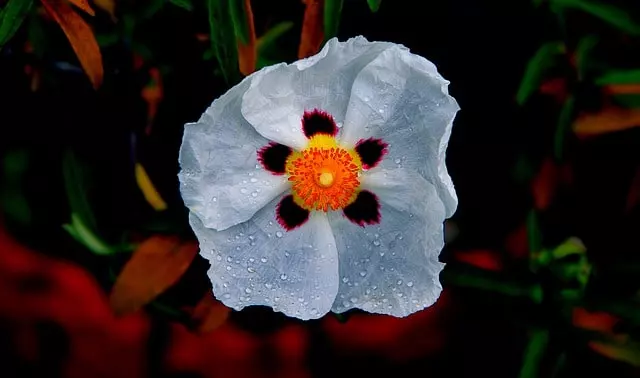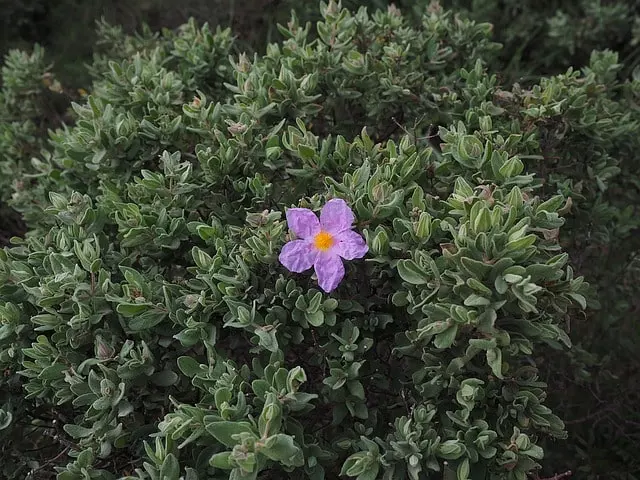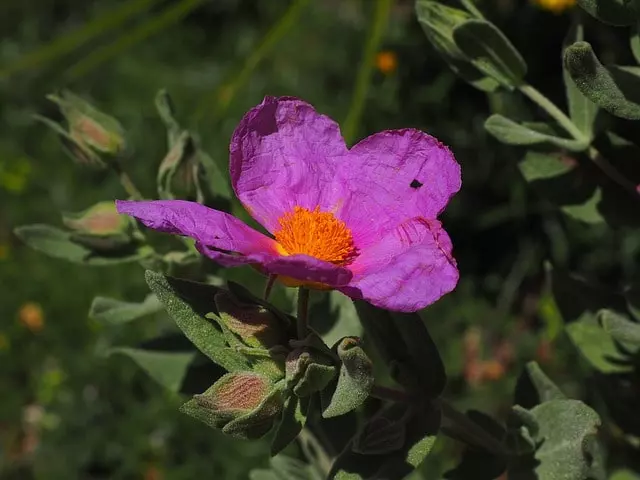Cistus is a genus of shrubby plants very appreciated by gardening enthusiasts, and besides being very decorative, they can be grown both indoors and outdoors in areas with temperate climates. If you want to learn more about the care of the rockrose plant and its characteristics, join us in this article, in which you will discover a complete guide to this beautiful flowering plant.
Table of Contents
Characteristics Of the Rockrose Plant
Of all the genus Cistus, the most common in its cultivation is the so-called prickly rockrose or ladaniferous steppe, scientific name Cistus ladanifer. These are some of its characteristics:
- Like the rest of the plants of its genus, it is a shrubby plant that rarely exceeds 6.5 ft (2 meters) in height, being common to be kept in sizes well below these, especially indoors.
- Cistus ladanifer has its origin in the Mediterranean area and is such an important plant in this region and of such a great expansion, that most of the flower honey produced in the area incorporates rockrose pollen.
- It has lanceolate leaves of a beautiful grayish-green shade that are also covered with a film of aromatic oil, labdanum.
- The flowers of the rockrose, one of the main attractions of the plant, are up to 4″ (10 cm) in diameter, with 5 petals, white and very showy and, although they last a short time, the plant produces a large number of them. This means that, although the flowers last only a few hours, the plant is full of them for almost the entire spring and summer months. In other rockrose species, the flowers are pink or lilac.
- The scent of the rockrose plant is its other great attraction since in the warm months it will give a unique atmosphere to the spaces in which it is found.

Location For the Rockrose Plant
The rockrose is not a delicate plant, it is rustic and therefore it is not demanding with its location. Outdoors, we can place it almost anywhere, although it will develop better in well-lit areas, even with the direct sun as long as it is not too intense. It is common to use rockrose shrubs to form bushy groups in the garden, as well as to delimit borders or areas on the ground.
Indoors, it is advisable to place it in well-lit rooms, preferably near light sources such as windows.
Climate For the Rockrose Plant
Being native to the Mediterranean basin, the plant is adapted to temperate climates. It can withstand drought and fairly intense sunshine but does not tolerate intense cold or frost very well. If the temperature in your area routinely drops below 32 °F (0°C) in winter, you will not be able to grow rockrose in the garden, or you will need to protect it in some way during the cold months if you do.

Watering For the Rockrose Plant
Rockrose is a plant that tolerates drought very well due to its natural environment, but for this, it must be in good condition. Generally, watering it 1 to 2 times a week will suffice.
The most important thing in terms of watering is not to overdo it and flood it, as this will most likely cause its roots to rot. If your plant is in a pot and has a saucer, always remove the excess water 10 minutes after watering.
On the other hand, it is also very important not to water with water that is too calcareous. To maintain an acid pH of between 4 and 6, you can always squeeze half a lemon over a liter of water before watering your rockrose with it, thus preventing the soil from becoming too alkaline and the appearance of iron chlorosis problems. If you see symptoms of yellowing leaves on your rockrose, especially if only the veins of the leaves remain green, you need to use more acidic water for irrigation. Learn more about How to Measure Soil pH.
Soil and Fertilizer for Rockrose Plants
Rockrose is an acidophilic plant, it needs soils with a pH between 4 and 6 to develop properly. This makes it not advisable to plant it in areas with a lot of lime, but the most important thing is that it is soil with the best possible drainage.
It is not demanding in terms of nutrients, but if you use a substrate made with earthworm humus, peat, and coconut fiber in equal parts, you will get an ideal mix for most plants, rockrose among them. You should also add some vermiculite and perlite to the mix, thus ensuring better water absorption and retention properties.
Regarding the fertilization of the rockrose plant, it will be enough to add some organic matter to the plant in the warm months, in the form of worm castings or compost.
Pruning and Repotting for Rockrose
At the end of winter, before the rockrose plant wakes up from its vegetative rest, it is sufficient to prune it for maintenance by removing dead or decaying branches. In spring, after the first flowering, you can prune it to stimulate a higher production.
Rockrose does not tolerate transplants well, so it is best to avoid them unless they are necessary. Avoid doing it every year or you will put your plant under too much stress.


